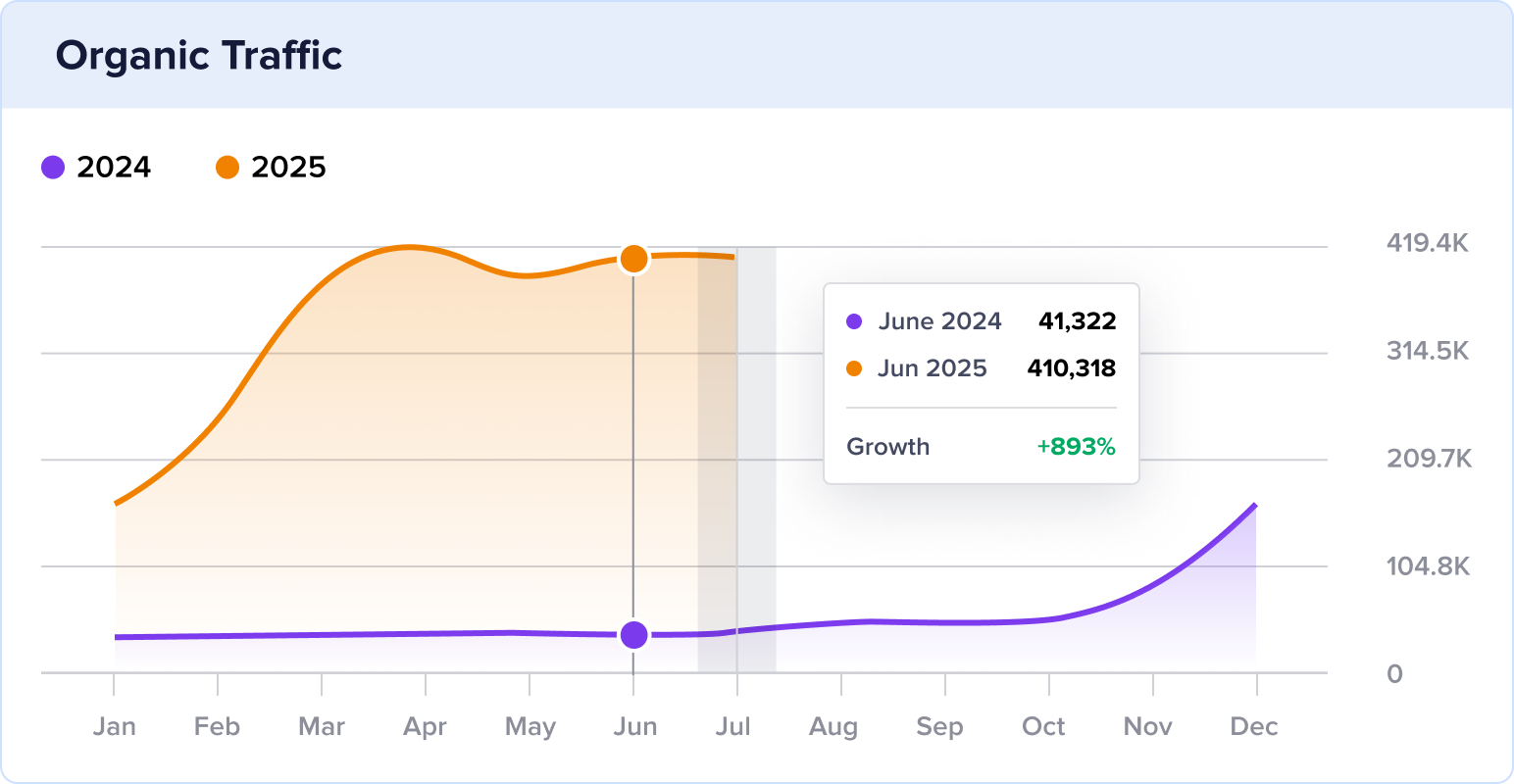How An Online Dog Magazine Grew Traffic by 1,588% in 3 Months
https://www.dogster.com/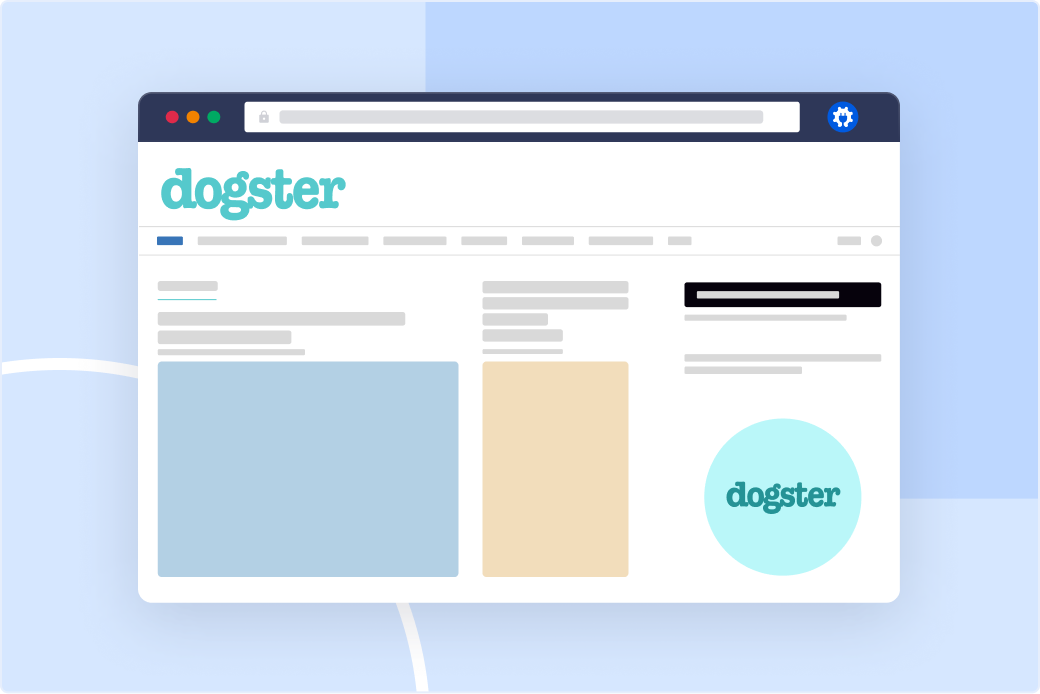
Stats
243.2K to 4.1M Monthly Visits
Industry
Digital Publishing
Niche
Animals & Pets
Reporting Date
May 2024
Dogster is an online dog magazine and website that has been serving dog lovers for over 20 years. Its team of veterinarians and dog experts offers advice on dog behavior, health, and product recommendations.
Despite a long-standing online presence, Dogster has entered a new level of visibility in 2024.
Spring skyrocketed organic traffic to unprecedented heights, with May unlocking over 4 million monthly visits.

This SEO case study dissects the strategies that fueled Dogster's meteoric rise, offering valuable insights for website owners looking to supercharge their rankings and organic traffic.
In This Article
The Catalyst: How Dogster Reached 4.1M Monthly Visits
1. Published Fresh, Expert-Vetted Content
When we look at Dogster’s organic traffic over the past year, February to March 2024 saw the biggest growth.
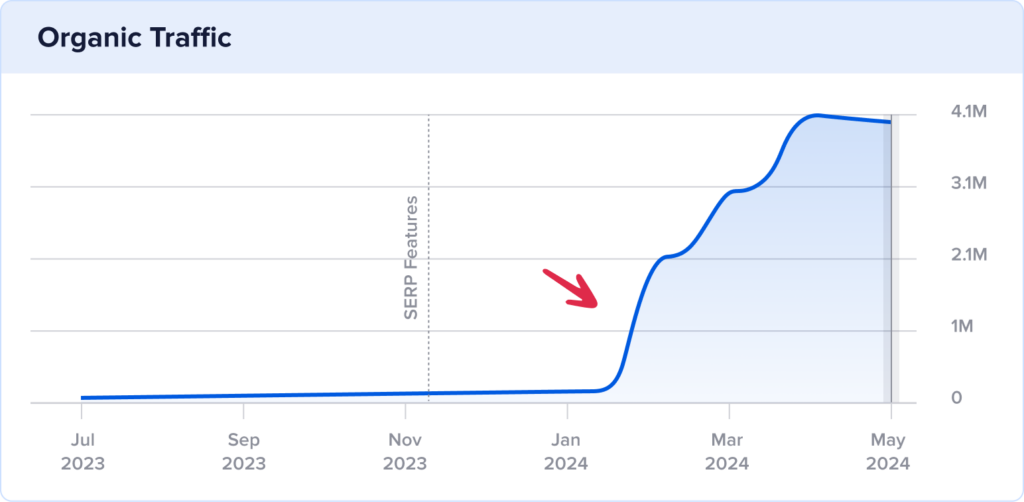
During this time, Dogster more than doubled the content on its website.
Typically, they had over 6K pages on the site at any given time during 2023. However, March brought the page count to over 13.2K.
They appear to have done some cleaning up over the past few months, with May settling at 10.2K URLs—a still impressive number compared to where they were at the beginning of the year.
While it’s no SEO secret that more (high-quality) content equals more rankings, Dogster is doing something a little different with its fresh content to really make it stand out.
Dogster optimizes for Google E-E-A-T, which stands for Experience, Expertise, Authoritativeness, and Trustworthiness.
They do this by implementing a two-pronged approach:
- They include a vet-approved banner near the top of an article. This provides dog owners peace of mind that the information they’re consuming is reliable and trustworthy.
It also lets search engines know that an expert has reviewed and fact-checked the content. (This is becoming more important as AI-generated content infiltrates the search landscape.)

- They highlight their team’s qualifications on the About Us page. Dogster has an extensive team of qualified experts to create and review content.
The About Us page introduces their team members, highlights their credentials, and allows users to learn more about each individual via an author bio page.

Ultimately, both strategies work in tandem to create helpful, trustworthy content.
Search engines have rewarded Dogster’s efforts with a dramatic increase in keyword rankings.
Rankings tripled over the last 3 months, with May boasting 1M keyword rankings.

Why this matters:
In the dog-eat-dog world of online pet care advice, trust reigns supreme.
This is especially true for any website considered a YMYL niche.
YMYL is a Google acronym for Your Money or Your Life. It refers to websites that can have a real-life impact on a user's health, happiness, or financial security.
Since pet care decisions can significantly affect a dog's well-being, Dogster could fall into this category.
But even if your website isn’t considered a YMYL category, creating valuable, trustworthy content is the cornerstone of digital success.
Author bios are a powerful way to achieve this, and Dogster is the proof.
Author bios put real people behind your content, engaging your audience and giving search engines the credentials to support your claims.
How to write author bios for Google E-E-A-T:
- Highlight your credentials.
- Include relevant keywords.
- Write in the third person.
- Keep it short and simple.
- Link to social media accounts.
- Include a profile picture.
For even more tips, here’s a tutorial on how to write E-E-A-T-optimized author bios.
Tools for author bios:
For WordPress users, I highly recommend the Author SEO Addon from All in One SEO (AIOSEO).
This tool makes it super easy to write effective author bios that earn trust from users and search engines.
You’ll get user-friendly fields that are essentially fill-in-the-blanks. Add as many details as you want, upload a photo, and choose where you want your bio to be displayed.
If you have multiple team members, you can create an author SEO bio for each one.
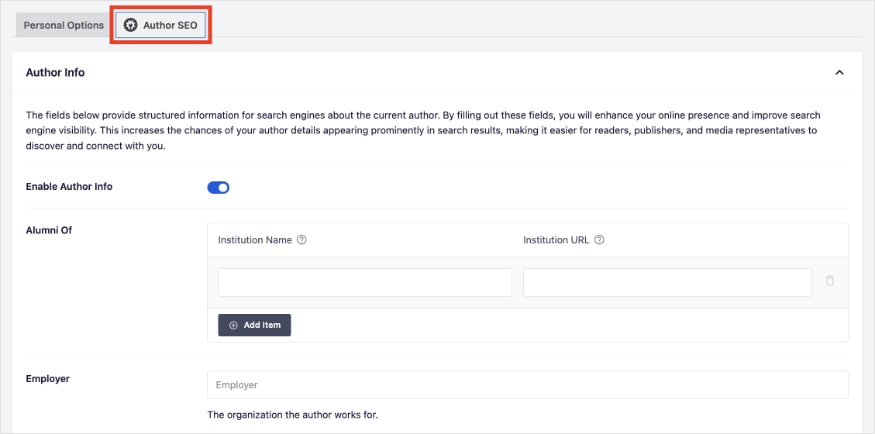
Next, let’s see how images became Dogster’s top SERP feature.
2. Optimized Images for Users and Search Engines
Images are a powerful way of keeping your readers engaged.
They help break up text, add visual context, and create an overall positive user experience (UX).
Dogster includes images generously throughout its website.
For example, each article starts with a banner image like the one below.
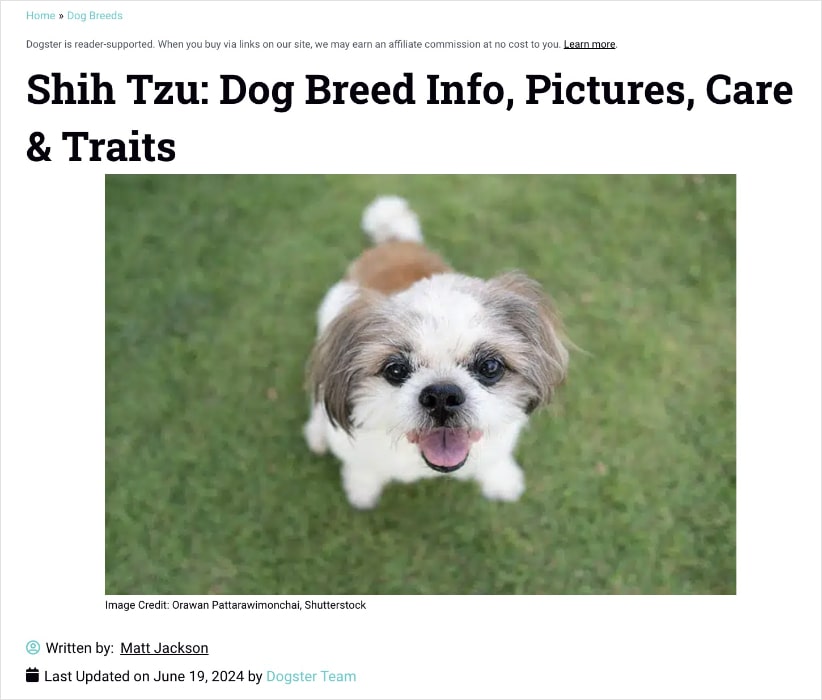
As for search engines, images require certain optimizations to help them understand the image.
After all, they can’t see images like you and me.
Image SEO is the practice of optimizing your images for search engines. It helps them decipher an image’s content and understand its purpose.
Furthermore, these optimizations can help you win rich snippets on the SERP.
The screenshot below shows the banner featured in the previous article.

So how’d they get their images onto search results?
Dogster adheres to the following image SEO best practices:
- Write descriptive alt text. (From Dogster: “Happy shih tzu dog sitting on green grass.”)
- Include keywords in the image filename. (From Dogster: “happy-shih-tzu-sitting-on-green-grass.jpg”)
- Send strong on-page signals. This includes an array of elements such as an optimized H1, subheadings, URL, metadata, and more. For further reading, here’s a Beginner’s Guide to On-Page SEO.
Image SEO also helped Dogster rank in Google’s Image Pack, another traffic-generating SERP feature.

Overall, Dogster’s image rich results have increased from 30.6K in January to 197K in May.

Why this matters:
According to ranking statistics, rich results have the highest clickthrough rate (CTR) at 58%.
For context, non-rich results have a 41% CTR.
More clicks equal more traffic and, ultimately, more revenue for your website.
Insights from the recent Google Algorithm Leak also suggest that Google tracks and uses clicks as a ranking signal.
This means clicks can play a vital role in a page’s ranking, making it more important than ever to optimize for them via rich snippets.
How to do image SEO:
In addition to the earlier optimizations mentioned above, you should also do the following:
- Include image title tags.
- Implement schema markup.
- Write captions when helpful.
- Compress images for faster loading.
- Create an image sitemap.
For a full list of 18 optimization tips, visit this article on how to optimize images in WordPress.
Tools for image SEO:
AIOSEO’s Image SEO tool makes optimizing your images a breeze.
You can automate important image elements using smart tags. This feature can generate image titles, alt text, captions, and more.
Plus, it’s fully customizable.

Now, let’s see how Dogster takes a people-first approach with its content.
3. Answered Popular User Queries
You may have heard the expression “write for people first, bots second.”
Dogster does just that (and so should you!).
Dog lovers are at the core of each piece of content, and Dogster aims to empower them with the knowledge and resources they need to care for their furry companions.
Understanding their audience and search intent helps Dogster anticipate the questions dog owners have.
Then, they write the best piece of content to address it.
Here's how they achieve this:
- Include FAQs at the end of an article. FAQs are a great way to conclude an article and highlight key takeaways. The FAQ format is easy for users to scan and find quick answers while also being search-engine-friendly.
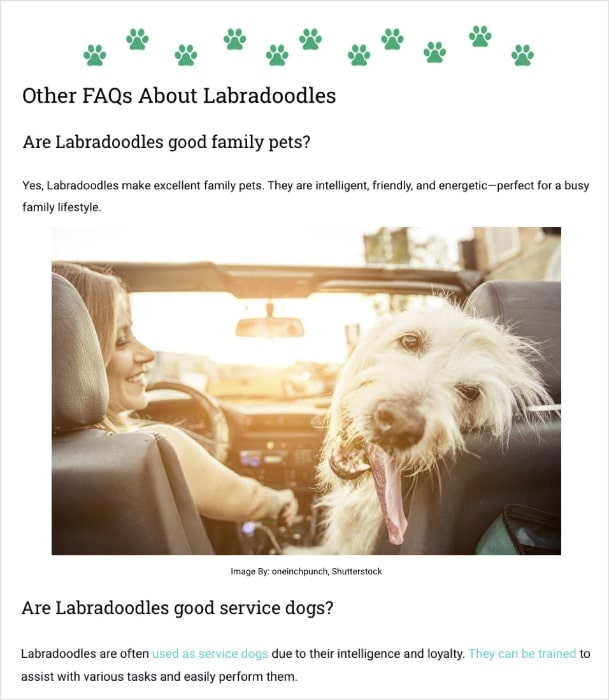
2. Structure content in a question-answer format. Outside of FAQs, Dogster also optimizes its content structure for questions. For example, the H1 might be question, then the introduction answers it. Or a subheading will have a question-based keyword, and the copy below speaks on the topic.
For all intents and purposes, it looks like an FAQ without being an FAQ.
Search engines understand them equally, though.
This is important because search engines love quick and concise answers they can serve on the SERP, especially in Google’s People Also Ask (PAA) box.
This SERP feature answers popular questions related to the user’s search query.
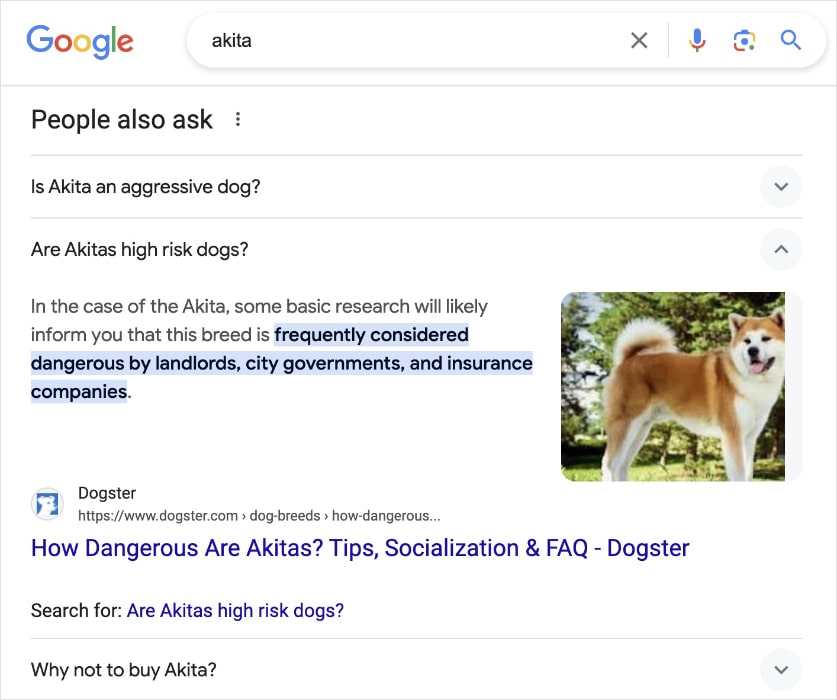
PAA results are a covetable search result due to their prominence on the SERP.
Users also consider these results more trustworthy, boosting your brand’s reputation in your audience’s eyes.
In May 2024, Dogster’s PAA results reached 210.8K rankings.
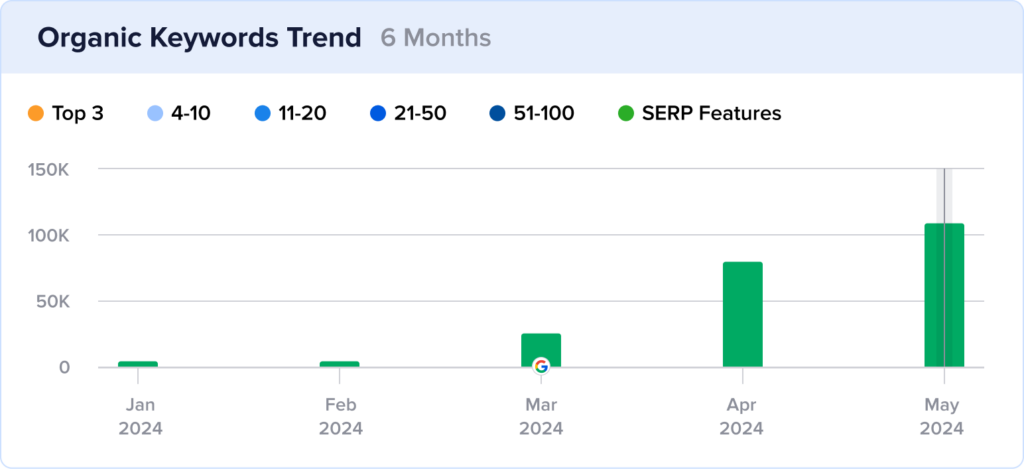
Why this matters:
Putting users first and addressing popular queries isn't just user-friendly; it's also a winning SEO strategy.
Here's why prioritizing user questions and optimizing for the PAA box translates to success:
- Better online visibility
- Enhanced user experience
- Improved search rankings
- Increased organic traffic
- Stronger brand awareness
How to optimize for Google’s People Also Ask:
You can rank in the PAA box by following these steps:
- Answer the right questions (keyword research will help you find them).
- Create stellar content that fulfills search intent.
- Write FAQs or question-based subheadings.
- Implement FAQ schema markup.
For more details, check out this guide on how to optimize for Google’s PAA.
Tools for FAQs:
FAQs are an effective way to rank in the PAA box. With AIOSEO, you can write them easily using FAQ blocks in WordPress. The plugin automatically adds FAQ schema for you—no coding required.

Finally, let’s explore Dogster’s use of breadcrumbs to boost discoverability on the SERP.
4. Implemented Breadcrumbs for Easy Site Navigation
Breadcrumbs are a navigation trail that helps users identify where they are on the website.
They typically appear at the top of the page, like in the example below.
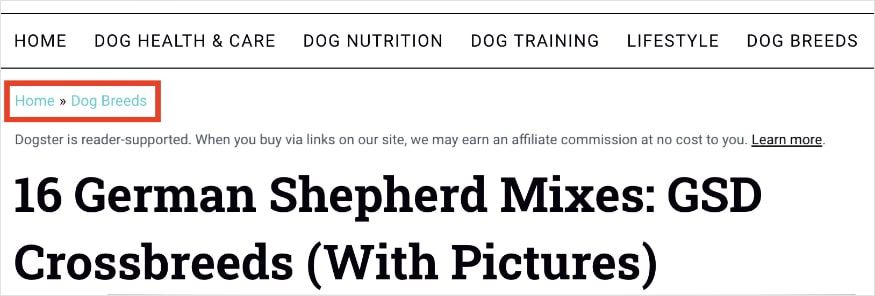
Search engines can also use breadcrumbs to understand your site hierarchy and generate sitelinks.
Sitelinks are additional links from the same domain that appear under a search result.
Sometimes, they’ll come from breadcrumb structured data, which Dogster uses, and look this on the SERP:

Other times, they’ll come from an article’s table of contents or subheadings and look like this:
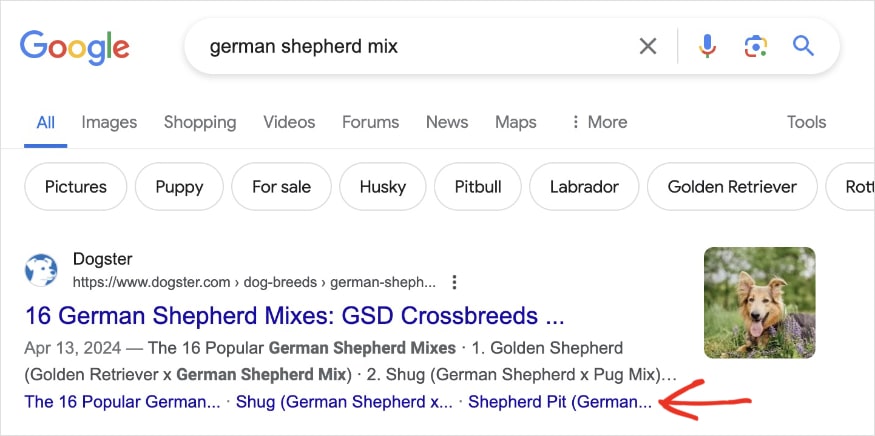
Both promote a positive user experience and ease of navigation.
In May 2024, Dogster acquired 25.1K rankings with sitelinks.

Why this matters:
While breadcrumbs might seem like a minor detail, they can have a significant advantage for both users and SEO:
- Easier site navigation for users
- Improved crawl efficiency
- Can promote content discovery
How to add breadcrumbs:
This tutorial shows you how to add breadcrumbs in WordPress, but here’s a quick recap of the process:
- Install a breadcrumbs plugin.
- Assign a primary category to your post or page.
- Implement breadcrumb schema markup.
Tools for breadcrumbs:
You can add and display breadcrumbs to your WordPress site using AIOSEO’s breadcrumbs generator.
AIOSEO enables breadcrumbs by default and automatically adds breadcrumb schema markup for you.
You’ll also get full control of how they’re displayed.

Standout SEO Wins
Dogster has a robust digital marketing strategy that extends beyond organic search.
Let’s look at a final growth strategy that you can use to replicate their online success.
Leverage Social Media to Build Customer Loyalty
Social media platforms offer a powerful tool to connect with your audience on a personal level.
You can promote your latest content, ask for user feedback via polls, or share fun posts in a more casual atmosphere.
For Dogster, they use social media to engage its audience with creative, helpful posts about taking care of their furry friends. (Check out the Facebook post below for Dogster’s summer safety tips.)

Today, Dogster has over 186K followers on Facebook, proving users find their posts engaging and worth the follow.
Ultimately, sharing content on social media can help you create a loyal customer following and drive more traffic to your website.
Tool: You can connect your WordPress site to 11 social networks using AIOSEO’s Social Media Integration. This tool makes it easy to customize social assets, like Twitter cards and Facebook posts.
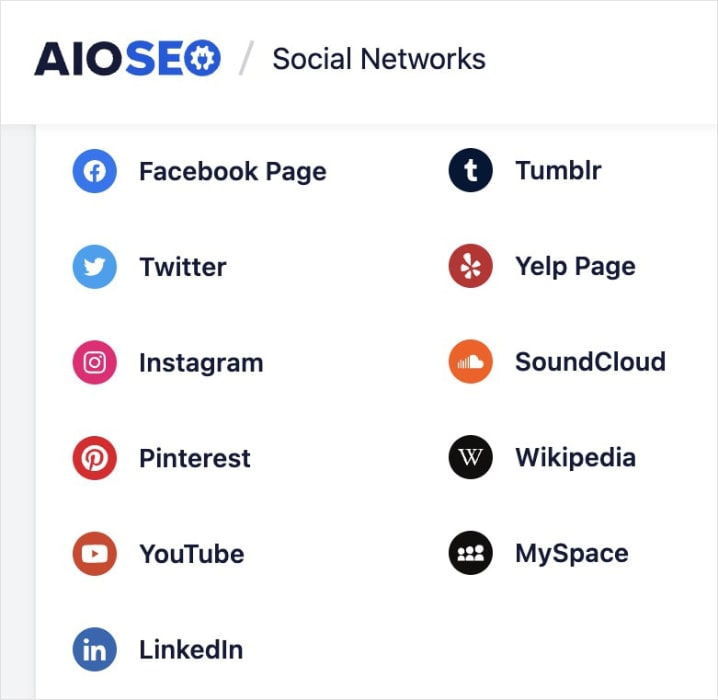
Takeaways
Now that we’ve identified the strategies behind Dogster’s explosive traffic growth, let’s turn them into SEO to-dos for your website.
I’ll also share 3 additional strategies you can do even better than Dogster.
Top 3 Strategies to Emulate
- Create a content strategy and schedule you can stick to. Fresh content has been the backbone of Dogster's recent organic success. For your site, develop a content strategy that establishes your brand as an expert in its niche. Keyword research will help you with this. Then, publish new posts regularly. You can also share them on social media every week, like Dogster.
- Showcase your team’s experience and expertise with author bios. Personalize your content with the people behind your brand. Author bios are a powerful way of connecting with your audience and showcasing your team's talent. You should include the author's professional experience and credentials in their bio. Also, let their personality shine with a fun fact or unique piece of info.
- Use a mix of on-page and technical SEO to win rich snippets. Implementing a holistic SEO strategy is the most effective way of winning rich snippets on the SERP. Incorporate on-page elements such as optimized titles, subheadings, and URL structures. Then, support your content on the backend of the site with technical SEO best practices, like schema markup and mobile-friendliness. Combined, these optimizations help search engines crawl, understand, and rank your page—and generate eye-catching rich results.
Bottom 3 Strategies to Reconsider
- Don’t forget to add schema markup. I would have liked to see more schema markup on Dogster's website. While they have a few of the basics, they don't implement ImageObject schema or FAQ schema, both of which could help search engines generate more rich results. For your website, make implementing schema markup a standard practice. You can choose the best schema type according to the page. And to save time, use a Schema Generator that implements it automatically for you.
- Stop writing metadata that far exceeds character limits. Many of Dogster's meta titles and descriptions are getting flagged for being too long for the SERP. This results in truncation. While SEOs debate on metadata length, I think it's important to remember the importance of the user experience. A truncated result can result in confusion or incomplete information. On the other hand, complete and accurate metadata can help you intrigue users to click. I always run my metadata through a SERP snippet tool before publishing, and I recommend you do the same.
- Don’t neglect image title tags. Effective SEO is in the details. Title tags are one of the most frequently overlooked elements when optimizing images. These appear when users hover or click on an image. Image titles are super easy to write and provide users and search engines with more context. Ultimately, it doesn’t make sense to not include them when they take an additional 5 seconds of your workflow and help search engines better understand your images. Don’t have seconds to spare? That’s okay; AIOSEO’s Image SEO tool can write them for you.
Steal Our Winning SEO Strategy: A Checklist for Your Website
Download A Free SEO Checklist
Access our comprehensive SEO Checklist with a single click. We'll deliver it straight to you, putting actionable items with SEO tools and tutorials right at your fingertips.
Enter your name and email to download a free SEO checklist.
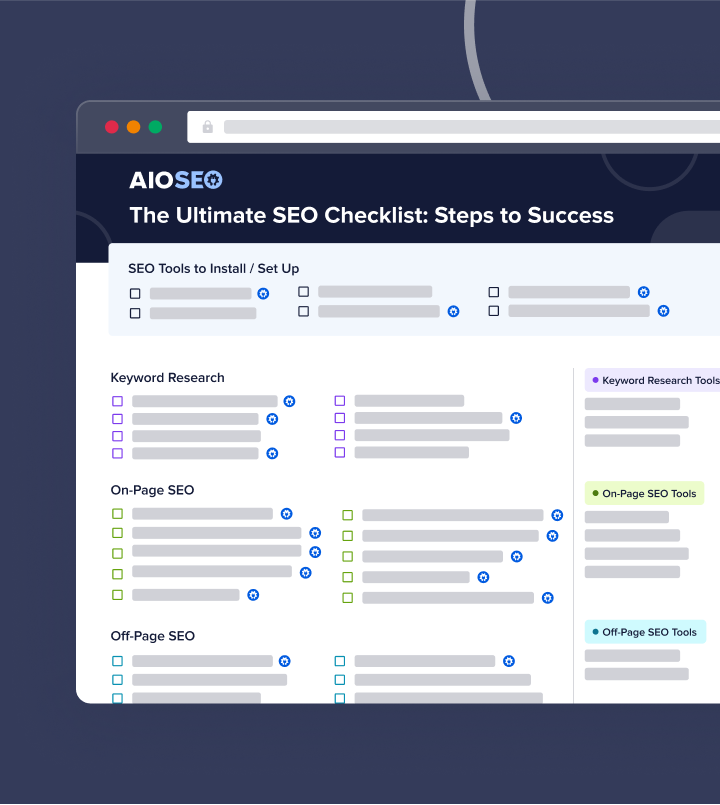
Unlock an Organic Traffic Breakthrough With AIOSEO
Dogster's success story serves as a blueprint for achieving SEO success. Their commitment to high-quality content, user experience, and community building has propelled them to the forefront of the pet care niche.
However, replicating these strategies can feel overwhelming, especially for website owners navigating the ever-evolving SEO landscape alone.
What if you could skip the guesswork and enjoy a direct route to replicating Dogster's winning formula?
AIOSEO can help you do just that.
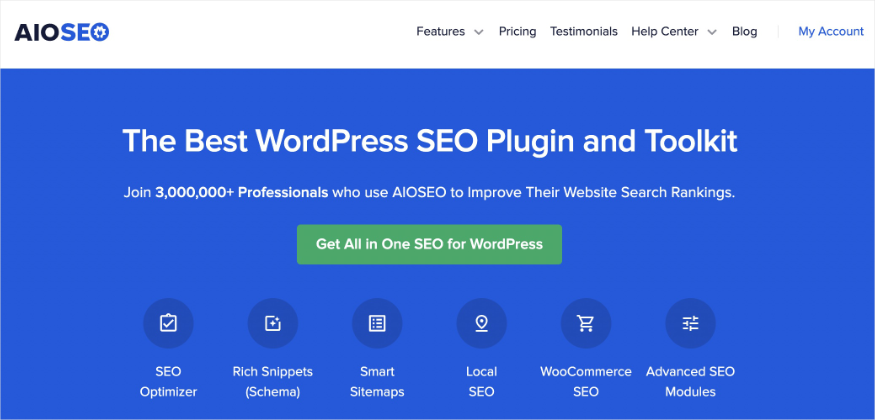
AIOSEO is the best SEO plugin for WordPress. You’ll get a suite of powerful tools that help you optimize your website for higher rankings and more organic traffic.
Here are a few of our favorites:
- Author SEO: Create powerful author bios that showcase your team’s experience and expertise. This add-on aligns your content with Google E-E-A-T guidelines and helps readers trust what you share.
- Image SEO: Turn on automatic image alt text and title attributes with a single click. You’ll save time from manual entries while helping users and search engines understand your images.
- FAQ Blocks: Add FAQs to your content to increase the likelihood of appearing in Google’s People Also Ask box. These results help boost brand awareness and increase clickthrough rates.
- Breadcrumbs: Create a breadcrumb trail that shows users where they are on your site in relation to the homepage. You can customize the look and show them exactly where you want on your site.
- Social Media Integration: Seamlessly connect your favorite social media platforms to your site and share content with your audience. Available integrations include Facebook, Instagram, Twitter, LinkedIn, Pinterest, YouTube, and more.
- Rich Snippets Schema: Win more rich results with AIOSEO’s user-friendly schema generator. Just pick the schema type you want, and we’ll format the structured data properly for Google.

